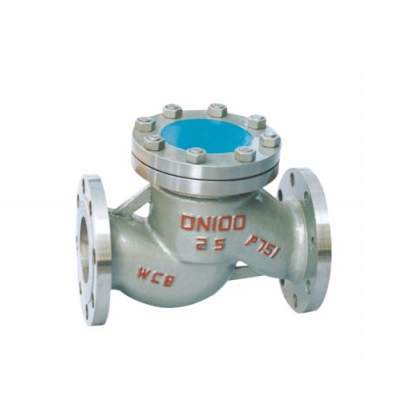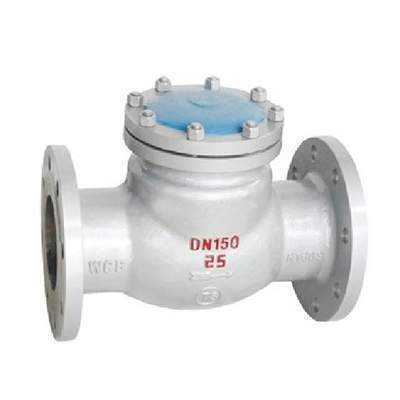Welcome to My Blog!
Before we dive into the content, I’d love for you to join me on my social media platforms where I share more insights, engage with the community, and post updates. Here’s how you can connect with me:
Facebook:https://www.facebook.com/profile.php?id=61563865935136
Now, let’s get started on our journey together. I hope you find the content here insightful, engaging, and valuable.
Introduction

Check valves play an essential role in fluid systems, ensuring that liquids or gases flow in one direction and preventing backflow. These simple yet effective devices are used in various applications, from plumbing systems to complex industrial operations. Understanding the function of a check valve can help optimize system performance and prevent costly damage caused by reverse flow. In this blog, we will explore the crucial functions of check valves, their types, how they work, and the benefits they offer in various systems.
What is a Check Valve?
A check valve, also known as a non-return valve, is a mechanical device that allows fluid (liquid or gas) to flow in only one direction. The primary purpose of a check valve is to prevent backflow in pipelines, preventing contamination, system damage, and safety hazards. The valve automatically closes when flow reverses, preventing the fluid from returning to its original source.
The Function of a Check Valve in Fluid Systems
The function of a check valve is critical in ensuring the stability and efficiency of a fluid system. It maintains the direction of flow and offers a safeguard against reverse flow that could damage equipment or compromise operational safety. Check valves are integral in many systems, including HVAC systems, water treatment plants, power generation facilities, and industrial piping.
Preventing Backflow
One of the most important functions of a check valve is to prevent backflow. In systems that involve pumping fluids, such as water, oil, or gases, backflow can lead to contamination, system failure, or equipment damage. A check valve ensures that fluid flows in the correct direction, automatically closing if the flow reverses. This is particularly important in applications where maintaining a clean and safe fluid environment is essential.
Protecting Pumps and Compressors
Pumps and compressors are vulnerable to damage from backflow, which can cause pressure spikes and damage sensitive components. The function of a check valve in such systems is to protect these costly equipment by blocking reverse flow and ensuring that pressure is maintained. Without check valves, pumps and compressors could be subject to frequent repairs, downtime, and shortened service life.
Maintaining System Pressure
Another critical function of a check valve is to maintain consistent system pressure. By preventing backflow, the check valve ensures that pressure within the system remains stable, which is essential for maintaining optimal performance. Consistent pressure is particularly important in industrial applications, such as chemical processing, water supply systems, and oil and gas pipelines.
Preventing Contamination
In many applications, especially in potable water systems or sensitive industrial processes, contamination from reverse flow can have serious consequences. The function of a check valve is to prevent backflow that could introduce contaminants into the system, ensuring that the fluid remains clean and safe. This is particularly important in systems where cross-contamination could affect product quality or system hygiene.
Enhancing Operational Efficiency
By preventing the need for manual intervention to address backflow issues, check valves contribute to the overall efficiency of a system. They reduce the likelihood of flow disruptions, allowing systems to run smoothly and efficiently. The automatic operation of a check valve minimizes the need for maintenance and ensures that the system continues to operate without interruption.
Types of Check Valves
Check valves come in a variety of types, each designed to suit different applications. Some common types include:
- Swing Check Valves: These valves use a hinged disc to control flow, swinging open when flow is in the correct direction and closing when backflow occurs.
- Ball Check Valves: These valves use a ball to block reverse flow. When the flow is in the correct direction, the ball is pushed out of the seat, allowing fluid to pass.
- Lift Check Valves: These valves have a disc that lifts off the seat when flow is in the correct direction, but closes tightly when flow reverses.
- Tilting Disc Check Valves: These valves have a disc that tilts to block backflow, offering a more efficient and compact design than swing check valves.
Table: Comparison of Check Valve Types
| Valve Type | Design Feature | Best For | Common Applications |
|---|---|---|---|
| Swing Check Valve | Hinged disc that swings open | Low flow and low-pressure systems | Domestic water, HVAC systems |
| Ball Check Valve | Ball that blocks reverse flow | High flow systems | Industrial pipelines, chemical plants |
| Lift Check Valve | Disc lifts off the seat to allow flow | High-pressure systems | Oil and gas pipelines, water treatment |
| Tilting Disc Check Valve | Tilting disc for compact design | High-speed systems | Power plants, marine systems |
How Does a Check Valve Work?
The basic operation of a check valve is simple. The valve has an internal mechanism, typically a disc, ball, or plunger, that allows fluid to flow in only one direction. When fluid flows in the correct direction, the mechanism opens, allowing the fluid to pass through. However, if the flow reverses, the mechanism closes the valve, preventing backflow. This automatic operation ensures that the system remains intact and free from issues caused by backflow.
Flow Direction Control
The primary function of a check valve is to control the flow direction within the system. This is achieved through the internal mechanism, which responds to changes in pressure. As long as the fluid flows in the correct direction, the valve stays open. When backflow occurs, the mechanism reacts to the pressure change and closes the valve, effectively blocking the reverse flow.
Automatic Operation
Check valves do not require any external control or intervention. They operate automatically based on the fluid’s flow direction and pressure. This makes them ideal for systems where continuous monitoring or manual operation is not feasible. The automatic nature of check valves ensures that systems remain operational with minimal human intervention.
Benefits of Using Check Valves

Using check valves in systems offers several benefits, including:
- Prevention of Damage: Check valves protect sensitive equipment like pumps and compressors from the damaging effects of backflow.
- Cost-Effective Maintenance: By preventing backflow-related issues, check valves reduce the need for costly repairs and maintenance.
- Enhanced System Longevity: The use of check valves helps to extend the lifespan of equipment by preventing reverse flow and ensuring stable operation.
- Improved Safety: By preventing backflow and contamination, check valves help maintain a safe environment in systems handling hazardous materials or potable water.
Conclusion
The function of a check valve is vital in maintaining the integrity of fluid systems. By preventing backflow, protecting pumps and compressors, and ensuring consistent pressure, check valves contribute to the smooth and efficient operation of many industrial and domestic systems. Whether you are working with water, oil, gas, or any other fluid, understanding the importance of a check valve can help optimize your system’s performance and longevity.
If you’re looking for high-quality check valves to enhance your system’s reliability and safety, contact us for expert advice and top-notch products.
FAQ
What is the primary purpose of a check valve?
The primary purpose of a check valve is to prevent backflow in fluid systems, ensuring that fluid flows in only one direction and protecting the system from potential damage caused by reverse flow.
Where are check valves commonly used?
Check valves are used in various applications, including water treatment plants, HVAC systems, oil and gas pipelines, and industrial fluid systems, where backflow could cause damage or contamination.
How does a check valve prevent backflow?
A check valve prevents backflow by automatically closing when the flow reverses. The valve’s internal mechanism, such as a disc or ball, blocks the reverse flow, ensuring the fluid moves only in the intended direction.
